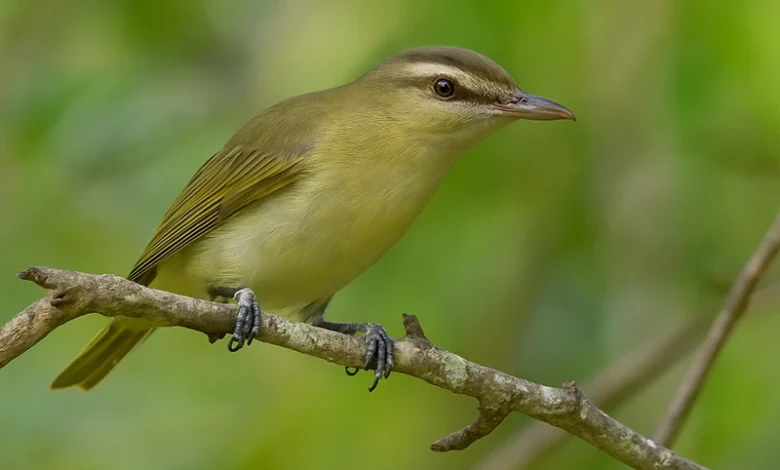Chwek (Black-whiskered Vireo)

The Black-whiskered Vireo (Vireo altiloquus) is a small, olive-green and white songbird, distinguished by the faint black “whisker” line on each side of its throat. It is a year-round resident in Dominica, commonly found in coastal woodlands, forest margins, and secondary growth areas across the island’s low- to mid-elevation zones. With its repetitive “whip-cheer, whip-cheer” call, this lively insect-eater is often heard before it’s seen.
Where It’s Found in Dominica
The Black-whiskered Vireo prefers sunny forest edges, dry thickets, and scrubby coastal zones, making it relatively easy to spot in several birdwatching hotspots:
- Syndicate Nature Trail (Morne Diablotin foothills): While better known for parrots, transitional areas here are home to vireos as well.
- Cabrits National Park: The dry coastal forest near Portsmouth is one of the bird’s most reliable haunts.
- Calibishie and Woodford Hill: These northeast coastal villages feature open woodland where the bird is frequently heard and observed.
- La Plaine to Rosalie corridor: This lush southeast stretch has patchy growth and riverside foliage where sightings are common.
- Morne Bruce and Botanic Gardens (Roseau): Accessible locations for casual birders to spot the vireo among flowering and fruiting trees.
Behavior and Birdwatching Experience
The Black-whiskered Vireo is an agile forager that hops between leaves and branches in search of insects, caterpillars, and small berries. Its musical, persistent song often rings out during the early morning, especially in the dry season between January and May. This makes sunrise walks an excellent time for both casual observers and experienced birders to catch a glimpse.
While the bird’s subtle coloration may blend into foliage, trained ears can pick out its sharp, rising notes. Bringing binoculars and a local bird guide is recommended, and many eco-guides based in Calibishie, Salisbury, or Portsmouth offer birdwatching tours that include this species.
Ecology and Nesting
The vireo plays an important ecological role in insect control and seed dispersal, and it typically builds its cup-shaped nest in low branches, binding grasses with spider silk. The nesting season usually coincides with the transition from dry to wet season, when food is abundant.
Though not an endemic bird, the Black-whiskered Vireo is a welcome symbol of healthy lowland habitats in Dominica. Its presence across forest walks, trails, and garden edges enriches any nature outing with its steady rhythm and ecological charm.




